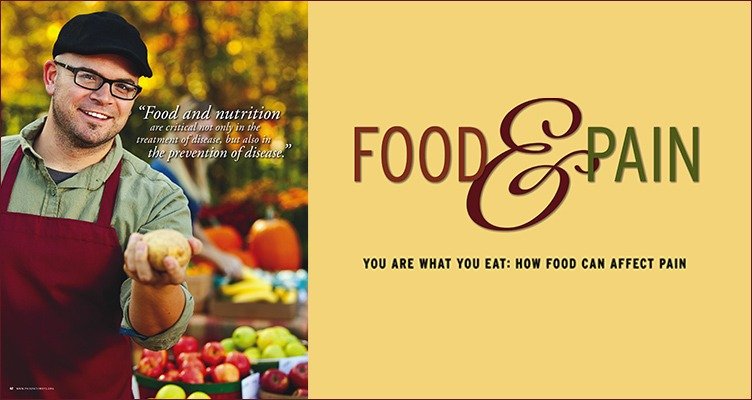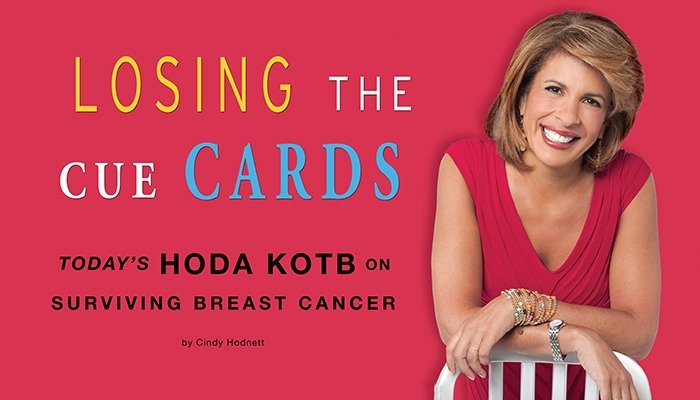Food & Pain

Most of us have heard the saying, “An apple a day keeps the doctor away,” and many of us grew up with mothers telling us to eat our vegetables. Even though we rolled our eyes, increasing evidence suggests that Mom was right about the virtues of fruits and veggies. In actuality, she was providing us tithe nature’s blueprint for optimal health.
When an individual is suffering with chronic pain, establishing a nutritionally sound diet can often fall low on the list of priorities. That’s unfortunate, because a new look at the foods, spices and drinks on our daily menu can not only improve our general health but also reduce or prevent pain.
FOOD AS MEDICINE
“Food and nutrition are critical not only in the treatment of disease, but also in the prevention of disease,”says Melanie Bopp, PhD, RD, LDN. “Our genetic makeup may predispose us to certain illnesses or chronic conditions, but we don’t have to sit back and let them occur. We can take charge of our health by putting healthy, unprocessed, unaltered foods into our systems to avoid the development of disease. Over the past decade, numerous scientific research studies have provided evidence to back up the role of food in health.
Many of these foods have been used for centuries in
other cultures.”
Other experts agree. “The science of epigenetics (the study of how genes are affected by factors other than DNA) is helping to show that food is not solely calories or fuel for our body,” says Keoni Teta, ND, LAc, with the Naturopathic Health Clinic of North Carolina.
“Food is information that actually speaks to your DNA. Eating a diet high in vegetables and fruits sends good information to your genes that, in essence, says things like ‘age slowly,’ ‘burn fat’ and ‘be less inflamed.’
“A great example of this is the research being done on resveratrol, a plant chemical found in high amounts in grape skins, mulberries and even cocoa,” Teta continues. “Although human studies are needed, resvertrol has been found to help increase lifespan and decrease the likelihood of chronic disease in mice. 1, 2
“Eating a diet high in starch and sugar sends messages to your DNA that say ‘age fast, store fat and be inflamed,’” says Teta. She says that this is especially evident in people with diabetes, particularly type II diabetes. “Type II diabetics actually do age faster, tend to be overweight and also tend to experience inflammation, as evidenced by the high prevalence of heart disease and cancer when compared to their non-diabetic counterparts,” Teta explains.
“The foods we eat can either exacerbate or mitigate chronic illness and the pain associated with these illnesses,” says Beth Reardon, MS, RD, LDN, of Duke Integrative Medicine. “The origins of pain stem from inflammation, and when we can minimize the amount of additives and preservatives we ingest, we reduce the oxidative stress found in our diet and environment.”
But the act of selecting foods may be more complex than is immediately apparent, says psychologist Janna Fikkan, PhD, a colleague of Reardon’s at Duke Integrative Medicine who specializes in eating and weight-
related disorders.
“Many of us have been socialized to think of food as a reward and to evaluate its quality based only on taste,” says Fikkan. “It’s quite different to think of food as a form of medicine, although this approach actually dates back to the very earliest days of medicine. Nonetheless, in our current food climate, using food as medicine and respecting and appreciating all the ways in which it can heal many of the systems in our body is quite radical.
Even taking the time to purchase, plan and prepare healthy meals is a bit of a revolutionary act in a culture that is highly focused on food being fast and convenient — often the least beneficial to us from a health perspective.” Fikkan says that through her work she is interested in “helping people change their relationship with food.”
FOODS THAT CAN HELP TREAT PAIN
Many treatments now labeled “folk remedies” evolved from centuries-old medicinal practices. As a growing number of individuals look for ways to play a more active role in managing their own health, complementary medicine practitioners are also helping pain patients explore their options.
“The best foods to eat in order to help prevent chronic pain tend to be high in fiber relative to the starch/sugar content,” says Teta. “These foods are vegetables and fruit. Again, the plethora of plant chemicals in vegetables and fruit send anti-inflammatory messages to your
DNA. Among these, specific nutrients tend to stand out when dealing with chronic pain. Some of the big hitters are turmeric (curcumin), cayenne, ginger, bromelain (found in pineapple), boswellia and fish oil.”
Bopp agrees, adding that patients should also consider their individual reactions to particular foods and spices. “For many people, pain is the result of inflammation,” she says. “For internal pain, there are certainly anti-inflammatory foods and herbs, such as turmeric and fish oil. But really, a plant-based diet of fruits, vegetables, nuts, seeds and beans that includes some fish or fish/omega-3 oils is considered an anti-inflammatory diet.
Just taking a few supplements or eating specific foods will not be enough.
“Another issue with inflammation is that each person responds differently to food,” Bopp continues. “Foods that are considered healthy, natural or even anti-inflammatory for most people may have the opposite effect in others. Identifying these foods is especially important in someone suffering from pain. I have helped many clients significantly reduce or eliminate pain by removing intolerable foods from their diets.”
As Reardon explains, “Your body is making hormones, and they are either inflammatory or anti-inflammatory. The foods you eat can act as triggers or moderate your body’s responses. A diet high in omega-6 and animal fats triggers inflammation, while a whole food, plant-based diet decreases inflammation and its negative effect on the organs.”
EXPLORING FOOD THERAPIES
Bopp, Reardon and Teta encourage pain patients to meet with a qualified professional when trying to identify an effective food therapy approach. They agree that when developed correctly, a diet designed to reduce pain can complement traditional therapy approaches.
“For example, a diet high in plant foods will send positive information to your genes so that your genes can express themselves in a way that creates a healthy body,” Teta says. “High amounts of sugar or starch will significantly contribute to almost any chronic disease, and choosing whole foods as close to their natural state as possible, i.e., minimally processed, may help reverse most chronic diseases.”
“Many medical professionals are not completely up to date on advances in nutrition, especially some methods that are considered ‘alternative,’” says Bopp, who often finds that after she and a client optimize a nutrition plan
to the client’s specific needs, the client may face opposition or a lack of support from his or her primary physician. “I am fully supportive of obtaining a second opinion, but keeping an open mind and researching alternatives should be in the forefront,” Bopp says.
MAKE A PLAN
“A nutrition plan would begin with a detailed assessment, including a medical history, symptom history and a review of life situations and dietary habits,” says Bopp. “Based on this assessment, we may proceed with a food sensitivity test, or I may have the individual keep records of their intake for a few days or weeks. Depending on medical history, we can use a variety of approaches through food and sometimes supplements to reduce symptoms of an illness or disease. Optimally, we can actually eliminate the need for medications, under medical supervision. It’s quite amazing what we are able to do to our bodies, both good and bad, with food alone.”
CHOICES: ONE DAY AT A TIME
Reardon adds that she tries to follow a 90/10 rule with her clients and her own family.
“Food selection is a choice, and I never say, ‘No, you can never have that,’ to my clients,” she explains. “I think if you make good choices 90 percent of the time, you’re doing very well.
“People should always keep the big picture in mind,” Reardon continues. “When I work with my clients, I encourage them to think about their intention when they are eating and to consider whose best interests are served by their food choices. Do their choices reflect the food industry’s best interests or their own? I try to help them understand where they want to be and how their choices affect them, and then I encourage them to take it one day at a time. Even small decisions can have a great impact and lead to more significant changes.” {PP}
REFERENCES:
1 Fernádez, A.F. and M.F. Fraga. 2 0 11. The effects of the dietary polyphenol resveratrol on human healthy aging and lifespan. Epigenetics
6(7):870 – 4.
2 Meeran, S.M., A. Ahmed and T. O .Tollefsbol. 2010. Epigenetic targets of bioactive dietary components for cancer prevention and therapy. Clin.
Epigenet. 1(3-4):101–116
PainPathways Magazine
PainPathways is the first, only and ultimate pain magazine. First published in spring 2008, PainPathways is the culmination of the vision of Richard L. Rauck, MD, to provide a shared resource for people living with and caring for others in pain. This quarterly resource not only provides in-depth information on current treatments, therapies and research studies but also connects people who live with pain, both personally and professionally.
View All By PainPathways






